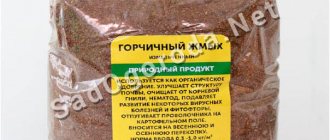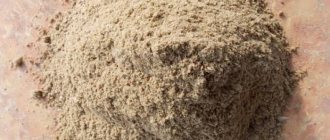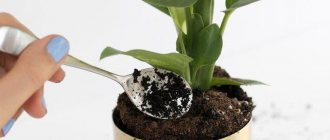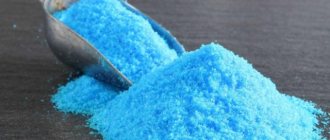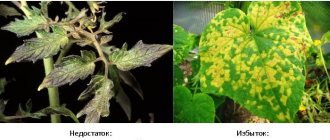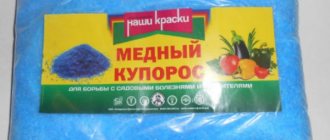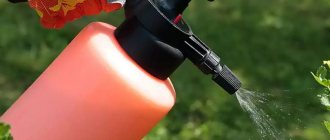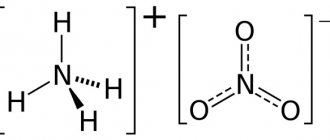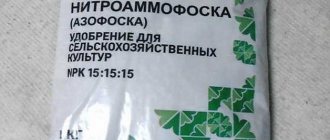Category: Organic fertilizers Reading time: 8 min · Views: 33,141
Everything will come in handy around the house, even coffee leftovers and tea leaves. This is the best natural fertilizer for home and garden plants. Coffee cake has recently been used as a fertilizer, and not everyone knows about it. Coffee waste contains microelements necessary for garden crops, and the composition of the soil will become loose and enriched. The pH index of the fertilizer is neutral, so it is acceptable for any type of soil. Let's look at all the ways to fertilize with coffee.
Cake composition
For people, the coffee drink is not of great value, but for plants it is a concentration of beneficial microelements. Potassium, phosphorus, nitrogen, copper - these important substances strengthen plant health and provide nutrition.
There is as much nitrogen in the cake as in rotted weeds. This is a very high figure, because crops need nitrogen for active vegetation.
Phosphorus, the content of which in coffee is quite sufficient for the development of crops, improves flowering and fruit set. Phosphorus is also indispensable during the formation of roots and improves the taste of fruits.
In addition to the listed elements vital for crops, coffee powder also contains other important minerals and trace elements.
Benefits of the cake:
- enrichment of the fertile layer with microelements;
- protection from certain types of pests;
- improving soil texture inexpensively;
- attracting soil microorganisms and earthworms;
- savings on the purchase of agrochemicals.
Some gardeners believe that with regular use of coffee fertilizer, agrochemicals are not needed at all. However, it is necessary to take into account the structure of the soil and its characteristics, because certain garden crops require a certain acidity of the fertile layer.
Can raw ground coffee powder be used as fertilizer? No, it is the coffee that is needed to feed the plants, otherwise it can harm the plants instead of benefiting them. The dried powder contains no acid, which is harmful to many crops.
As practice shows, not all seedlings like the coffee aroma. Gardeners have noticed that in areas where alfalfa and clover grow, it is better not to add grounds. Geraniums, cacti and succulents do not like coffee fertilizer.
The value of coffee cake in gardening
After preparing an invigorating drink, the chemical composition of coffee changes. Some of the nutrients pass into the liquid, but enough of them remain in the thicket to stimulate plant growth. During the brewing process, caffeine, tannin, and acids are released from coffee beans, dissolving in water. And the waste remains:
- organic acids;
- iron;
- calcium;
- potassium;
- magnesium;
- phosphorus;
- nitrogen compounds;
- B vitamins.
Naturally, there are much fewer nutritional components in the cake than in ready-made coffee. But at the same time they are enough to have a beneficial effect on all parts of the plant. In addition, the reduction in acidity of the grounds as a result of heat treatment makes it suitable for use in horticulture. Nitrogen compounds are involved in the process of photosynthesis, helping plants become saturated with oxygen. This is necessary for growth, strengthening the stem and root system. Phosphorus and potassium stimulate fruit set and help increase the duration of the flowering period. The grounds are suitable for caring for both indoor and garden flora. And when dried, it helps to double the yield of mycelium.
After making coffee, some of the nutrients remain in the cake
Of course, before using dormant coffee in the garden, you need to study all the intricacies of this method of feeding the soil. After all, its incorrect use can lead to disastrous consequences, including the death of the seedling.
Blank
To ensure that you have enough fertilizer by spring, the powder must be collected in late autumn. This is very simple to do: you need to dry portions of the cake on parchment sheets. When the moisture has completely evaporated, you need to pour the dry substrate into a tin/glass container. They need to be stored in a darkened room.
Instant coffee is not suitable for feeding, only ground coffee.
You cannot fertilize with cake after a sweet drink. It is also unacceptable to dry the cake after coffee with milk or other additives. For feeding, only powder from ground grains cooked without any additives is used.
From cats and dogs
Cats also don’t like coffee, and if your pet relieves itself in the wrong place, then after you clean and wash this place, sprinkle it with coffee.
Pets and random guests in your garden - cats and dogs - are capable of digging holes and destroy the first sprouts of seedlings, as well as “mark the territory.” To keep them at a distance, you can prepare a special mixture.
Dry coffee cake is mixed with 1-2 drops of rosemary or orange oil, or chopped citrus zest. This mixture is laid out in a thin layer where the animal’s paw should not tread.
How to use grounds in the garden?
It can be mixed with plant seeds (carrots, beets), this will speed up germination. A mixture of soil and dry coffee substrate is placed in planting pots for seedlings; this soil mixture gives excellent results. The seedlings grow strong and can easily be transplanted into holes.
You can also scatter the substance around the rooted seedling, which will facilitate an increase in nitrogenous substances in the fertile soil layer after each watering.
Note! If you set fire to a handful of cake in the house, all the flies and mosquitoes will fly away.
Fertilizer can be buried to a depth of about 4 mm. This method will retain moisture after watering and provide an influx of oxygen into the soil.
When planting, use compost with grounds mixed with the fertile layer in half. This will provide the seedlings with the necessary nutrition.
Also, dry grounds are simply diluted with water and irrigated green spaces.
Improving the mechanical properties of soil
Spent coffee is used as a fertilizer in the country to improve the mechanical characteristics of the soil. The soil texture is improved by the biological elements of the grounds. It is especially useful to use cake on soils of heavy texture - clayey, loamy. On sandstones, coffee cake reduces acidity, which has a beneficial effect on the composition of the fertile layer.
Note! Coffee protects the garden from weeds.
However, if you regularly use cake for mulching, the soil layer can become compacted and begin to impede air permeability. Therefore, mix the substrate with fertilizers of a larger fraction.
Serious mistakes gardeners make when using coffee as a fertilizer
- Use coffee without the support of other nutrients.
Dried grounds are a good helper in caring for plants. But, by itself, it does not provide the required amount of vital elements. Therefore, additional organic or mineral supplements are required. The garden owner decides what type of fertilizer to choose.
- Use too thick a layer of mulch on the soil surface.
Coffee ground into a fine powder quickly compacts, forming a dense crust through which air and water do not pass well. It is better to mix the grounds with larger mulch, such as straw.
Making compost
Due to the high percentage of nitrogen, coffee waste is added to the compost. Such a substrate not only saturates the soil with nutrients, but also prevents fungal infections in seedlings.
To make a coffee compost pile, you need to prepare the area. Fence 1 m2 of land and put up borders. The pile should not exceed a meter in height.
Composition No. 1:
dry coffee grounds;
- wilted weeds;
- tree foliage;
- stale straw;
- 400-450 grams of bone meal.
Composition No. 2:
- liter of dried grounds;
- a mug of dry chicken;
- a couple of mugs of ash;
- a bucket of stale hay.
The ingredients are mixed well and sprinkled with earth on top. After this, the pile is irrigated with settled water and covered with film. To ensure good ventilation, the pile is periodically pierced in several places with a wooden stick. Make sure the compost does not dry out. In extreme heat, it is necessary to irrigate the pile as needed and poke it with a stick. After 3-4 weeks, the temperature in the heap will drop, at which time earthworms are added to it.
To save the pile until spring, you need to cover the compost well with tree branches or spruce branches. The pile is covered with leaves and insulated as thoroughly as possible.
To treat plants with compost, it is first diluted with water, and then the beds or bushes are irrigated at the root. You can also irrigate homemade flowers with liquid compost.
Compost for home flowers
To prepare a nutrient substrate for flowerpots, place dry coffee powder, dry tree leaves and crushed straw in a ratio of 50:30:20 in a bucket or other suitable container. The ingredients are mixed and soil is poured on top. The compost must be well established, so its moisture content should be controlled and moistened in time. To provide oxygen, the compost is pierced with a stick. In a month, the mixture will be completely ripe and can be used to feed flower crops.
Making compost from coffee grounds
Another use for coffee grounds is composting. It is enough to store it in a compost bin. Again, keeping in mind the acidity, I first rinse the coffee grounds under running water.
Keep in mind that coffee grounds should not be the only component of homemade fertilizer. Its sufficient share is no more than 20% of the total mass. Otherwise, the compost will practically not rot. Other components include mowed grass, healthy fruits, straw, wood chips, sawdust and other plant waste.
To prepare express compost mass, you can mix the following components in approximate proportions:
- coffee grounds - 50%;
- straw, mowed dried grass - 30%;
- vermicompost - 20%.
The above components are thoroughly mixed, sprinkled with garden soil, and watered thoroughly. Then, with a stick, several holes are made in the dense mass for ventilation. Express compost will be ready for use in just a month and a half. Do not forget to periodically moisten the biomass.
adding coffee grounds to your compost pile
I prepare compost mass according to the following instructions:
- In the spring, I choose a suitable site: located on a flat area, far from home, resting place, drinking sources. To be protected from both rain and wind, it is not on a slope, not in a lowland. I don’t save space: the pile should occupy at least one square meter. Too narrow a space inhibits the decomposition of compost masses.
- I make a box out of boards for the compost heap, leaving 2-3 cm of space between them for ventilation.
- I lay out the components in layers: leaves, grass, straw, coffee grounds, garden soil. I don’t forget to sprinkle each layer of compost with bone meal.
- From time to time I water the pile: in order for decomposition to proceed more confidently, the biomass must be moist. Don't forget to add earthworms.
- Several times during the summer I shovel the pile so that the freshest layer is at the bottom and the very first is on top.
- In the fall I cover it with spruce trees, dense branches, and a tarpaulin.
By next spring, last year's compost has ripened - I turn it over, shovel it, loosen it, put it in barrels and buckets. Then I sift through a large sieve and use it for its intended purpose.
Cake for the garden
The role of coffee grounds as fertilizer in aerating the fertile layer and protecting against slugs is irreplaceable. The powder composition attracts earthworms, but is undesirable for slugs and snails. Also, red ants and rabbits do not like coffee: they leave the area.
To repel ants from the area, you need to sprinkle dry powder on the paths or sprinkle coffee substrate on the anthill. To repel aphids and slugs, plants are sprayed with a liquid solution.
If you need to protect your garden beds from cats, sprinkle them with a mixture of coffee grounds and orange zest.
Tomato seedlings respond well to coffee fertilizer. For tomatoes, the cake is used throughout the growing season. Thanks to the attraction of beneficial soil microorganisms and the formation of bacterial strains, the fertile layer is enriched with essential nutrients.
For berry bushes, cake is used as follows. You need to scatter 2-3 cups of dry substrate around the roots and water them with water. And when planting a young seedling, place three to four cups of dry fertilizer in the hole and water it. The cake is pre-mixed with the soil.
Note! An important property of dormant coffee is the delay in the accumulation of nitrates in vegetable fruits.
Mulching with thickets protects garden flowers and fruit trees from slugs and other parasites without the use of chemicals. Caffeine acts as a poison on pests and destroys their population. Also, the smell of coffee repels insects and other unwanted “guests” in the garden. However, it is recommended to mix the cake with soil so that it does not form a dense film around the trunk, preventing air permeability.
Coffee from pests in the garden
Summer residents have experimentally found that the smell of coffee grounds added to the soil repels many types of insect pests from plantings, in particular:
carrot fly; slugs; ants; various types of aphids; fruit flies; larvae of various insects, etc.
When you apply it, for example, when sowing carrots or radishes, you can repel larvae and insects living underground and feeding on root crops from root crops, and prevent the appearance of carrot flies on carrots. Ants and slugs try to stay away from beds sprinkled with sleeping coffee because of its pungent odor. Thus, dormant coffee is effective against pests using any method of application to the soil.
Another useful property of coffee cake is its use to repel pets, especially cats, who want to set up a litter box in the garden.
Cake for garden and home flowers
Spent coffee is placed at the bottom of the flowerpot as fertilizer for indoor flowers. It acts as drainage, retaining moisture and protecting the roots of flowers from excess moisture. For irrigation, use a solution: a teaspoon of powder per liter of fresh, settled water.
Coffee waste is also used in dry form. To do this, a substrate is scattered around the flower and watered with settled water. The earth must be loosened, otherwise the coffee powder will create an impenetrable film on the surface of the earthen clod. For flowers that love acidic soil, drink unslept coffee.
How many spoons of grounds should be placed in a flowerpot? It depends on the volume of the container - from one tsp to two tablespoons.
Do not put wet grounds in flower pots, as they encourage mold.
Bulbous flowers respond well to coffee fertilizer, as they extract enough nitrogen from it for rapid development. Daffodils, hyacinths and tulips will bloom much faster if you regularly treat them with grounds.
Rhododendrons often suffer from root weevil attacks. Spraying the bushes with coffee solution will prevent the appearance of unwanted guests.
Note! Many insects do not like the smell of coffee.
Roses, lilies and begonias are very fond of coffee fertilizing. Rose bushes are sprayed with diluted grounds to protect against midges and other insects. This is a universal remedy for the rosary.
How to feed a flower bed with coffee fertilizer? When forming a flowerbed, you need to make a special mixture: mix a glass of dry powder with a bucket of fertile soil and distribute it over the flowerbed. If the flowerbed is large, take the appropriate number of buckets of fertilizer.
Dry powder is also used to feed the bushes; it is poured around the flower and sprinkled with earth. When water enters during irrigation, nutrients penetrate the soil.
Useful tips
Dried coffee grounds are very light, so when used dry, the slightest breeze can blow them away from the garden bed. To prevent this from happening, it is recommended to mix the cake with soil or sawdust and plant it shallowly in the soil.
If the color of the leaves of your plants changes after processing the coffee grounds, you should stop using the coffee grounds as fertilizer. You can carefully strain the coffee infusion and use only the liquid for watering, and use the grounds, for example, to feed conifers.
It is recommended to prepare fertilizer from coffee grounds for the garden, using the cake from the preparation of only natural coffee. It is not advisable to use instant powdered and granulated coffee for this purpose, since their nutritional value is not great.
Bottom line
Coffee cake as a fertilizer is widely used in gardening and floriculture. Dry powder structures the soil and creates conditions for breathability. Fertilizer is either placed on the surface of the fertile layer under the plant, or made into a solution for irrigation, or incorporated into the soil. It feeds plants well and compost based on grounds, it is mixed with soil or watered under the roots with a solution.
Thanks to fertilizing, seedlings develop much faster, produce lush flowering and high-quality ovaries. After coffee fertilizing, the fruits acquire a bright taste and color. Some gardeners are confident that regular fertilization of plants with grounds completely replaces chemical fertilizers. However, it is not recommended to use raw powder; it is first dried and the lumps are crushed.
In addition to improving the growth of seedlings, coffee is also used to repel pests - beetles and insects, slugs and ants. The use of cake as a mulching material brings positive results. Organic additive in the form of dried coffee is universal for gardening.
Use as mulch
In order for coffee to be beneficial as a SRM (slow-release fertilizer), it is important to properly prepare it for use. That is, rinse and dry, especially if the powder was boiled with sugar. The sweet treat attracts some insects, such as ants. They, in turn, spread aphids throughout the garden.
When you don’t want to rinse the used grounds, it’s better to brew the drink unsweetened and add sugar to the cup.
If there are no problems with ants, sugar in the coffee grounds is welcome. Some soil microorganisms actively reproduce in a sweet environment. In this case, coffee is a good nutrient medium for beneficial microflora in the upper layers of the soil.
Spent pulp, applied in a thin layer:
- Excellent soil moisture retention,
- Reduces the likelihood of contracting diseases,
- Maintains the effect of fertilizers with constant feeding.
As a natural dye
Coffee cake can be an excellent natural dye for Easter eggs
Coffee cake is a natural, environmentally friendly dye. It can be used to dye Easter eggs, fabric or paper. Coffee gives a noble brown tint. You need to pour the grounds with a small amount of hot water and leave for several hours. Next, dip eggs or cloth into the solution and leave for a few more hours. At the end of the procedure, the eggs are wiped with a soft, dry cloth, and the fabric is allowed to dry naturally.
By dipping the paper into the solution, you can make “antique parchment” with uneven, but very beautiful brown stains of varying intensity.
You need to keep it in the liquid for no more than a few seconds, otherwise it will become limp.
This is the best idea for decorating or making vintage cards with your own hands.
Why you shouldn't use coffee
Unfortunately, despite its many benefits, coffee is not entirely perfect:
- Various studies have found that coffee grounds inhibit the growth and development of seedlings and seed germination.
- Coffee is blamed for the caffeine it contains, which has allelopathic properties in relation to seeds and seedlings. It should not be used for cuttings or growing seedlings. Sometimes coffee is bad for the growth of certain plant species (such as Tradescantia), so use it in moderation and observe how the plants react.
Reference. Allelopathy (Greek allelon - mutual and pathos - suffering) is the harmful effect of chemical substances secreted by plants or fungi of a given species or obtained as a result of the decomposition of these plants or fungi. Allelopathy is mainly due to chemicals released into the environment that affect the growth of other organisms, mainly plants and bacteria. Substances can inhibit the germination, growth and development of other plant species living in the immediate vicinity.
- There is no need to overuse coffee fertilizers for plants that like alkaline soil. These include:
- lavender;
- thyme;
- oregano;
- grape;
- Snapdragon;
- oleander;
- bougainvillea;
- Carolina yucca.
You should never go overboard with the grounds. Of course, it will not completely replace specialized fertilizers - it does not contain all the ingredients necessary for plants.
Coffee grounds can have many beneficial uses around the home. In an indoor pot or garden, it becomes an excellent fertilizer for flowers and other plants. Since it absorbs odors, it will also slightly freshen the air in the apartment. So let's not treat the grounds as waste - they will become valuable environmental fertilizers. It can be used as a long lasting organic fertilizer, mulch, compost, substrate or repellent.
